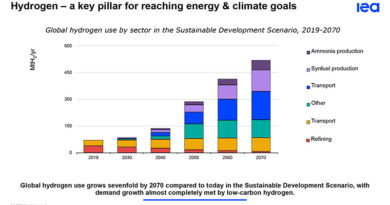
New EU pharmaceuticals rules in a strong European Health Union
Since 2020, the COVID pandemic altered every part of our lives, our societies, and our economies.
It caught the world unprepared and exposed the weaknesses of our health systems.
However, the pandemic also highlighted that we are stronger when we work closely with our Member States for the benefit of our citizens. It transcended institutional taboos of the past and allowed us to invest instead in collaboration and global solidarity.
The strength of this solidarity could not have been better illustrated than through the EU Vaccines Strategy, in which the EU ensured deliveries of lifesaving COVID vaccines to all 27 Member States at the same time and under the same conditions.
That was the Rubicon moment for our European Health Union. Α Health Union in which where the health of our citizens takes centre stage in EU policy, and we do more together with Member States to bring added value for public health and for every EU citizen.
This could not be truer than in the area of medicines.
Our current pharmaceutical legislation has been in place for more than 20 years. In that time, these rules have enabled the delivery of safe and effective medicines to all those in need, including hundreds of medicines for children and people suffering from rare diseases.
However, new scientific and technological advancements have revolutionised the health and pharmaceutical landscape in the meantime. Today our citizens’ ability to find the medicines they need very much depends on where they live.
The numbers speak for themselves. When innovative medicines enter the EU market, 90% of them can be found in Western and bigger Member States. In Eastern and smaller Member States, that number is only 10%. The waiting time before they arrive on the shelves also differs a lot, with patients having to wait more than two years in some Member States and only a few months in others.
It is time for this to change. There can be no first and second class patients in the EU. Everyone deserves to have timely and equal access to medicines whenever needed.
That is why we need a true single market for medicines in the EU. To achieve it, we want to create an ecosystem for medicines that is both industry-friendly and puts patients at the centre; one in which availability, access, and affordability of medicines, as well as industrial competitiveness go hand in hand.
To ensure better access to medicines, companies will be given stronger incentives to launch in all Member States instead of just a selected few – new medicines should be available to patients everywhere in the EU. This should be our joint responsibility.
We have proposed a robust system of industry incentives to reward innovation and ensure that companies are rewarded for taking their medicines to all European countries. We will streamline authorisation procedures and shorten timelines for assessment to around 180 days so that medicines reach patients faster, and without compromising our high safety standards.
Affordability of medicines is a critical issue for patients and healthcare systems, and another key priority of the reform.
Generics and biosimilars, which are cheaper to produce, will be able to enter the market much quicker, which will help with availability and affordability. We will also help Member States to be in a stronger negotiating position when discussing market entry with companies, to negotiate prices and make decisions on pricing and reimbursement easier.
Over the last decade, reports of medicines shortages have increased significantly. When it comes to availability of medicines, we will put in place an EU alert system for potential shortages and require companies to have shortages prevention plans for their medicines. We will also establish for the first time an EU list of critical medicines to monitor the availability of essential medicines and address supply chain vulnerabilities.
Last but not least, tackling the increasingly pressing threat of antimicrobial resistance is crucial before it becomes the next global health crisis. Today, 35,000 people in the EU alone lose their life every year to drug-resistant bacteria.
We need urgent and ambitious action, which is why Member States have adopted in record time a new toolkit to address the AMR market failure.
This includes transferrable exclusivity vouchers as a powerful market incentive to promote investment and innovation in new antimicrobials, prudent-use measures and measurable targets for Member States to address overuse and reduce their consumption.
Taken together, all of these measures mean that access to innovative medicines will increase by 15% compared to today. This is an additional 70 million patients more in the EU who can potentially benefit from a new medicine and improved quality of life. This is what our European Health Union is all about.
Our reform of the EU’s pharmaceutical legislation is a once in a generation opportunity to do more for citizens and for industry.
So that we ensure that no patient is left behind, while reinforcing the position of the EU as a global leader in for pharmaceutical innovation.




